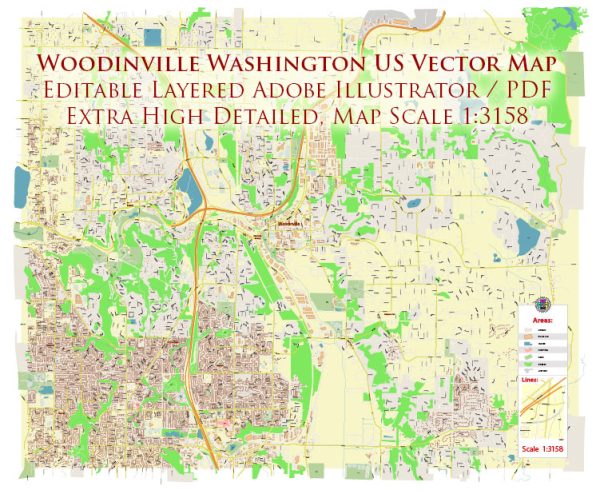Woodinville, Washington, located in King County, is a city that has undergone significant changes in its urban development over the years. The history of Woodinville’s urban development is marked by its transformation from a rural, agricultural area into a thriving suburban community with a mix of residential, commercial, and recreational spaces.
- Early Settlement and Agriculture (Late 19th Century): Woodinville’s history dates back to the late 19th century when Ira Woodin and his wife Susan moved to the area. The community was initially known for its agricultural pursuits, with many settlers engaging in farming and logging activities. The fertile soil and proximity to rivers made it suitable for agriculture.
- Railroad and Economic Growth (Early 20th Century): The arrival of the railroad in the early 20th century played a crucial role in the economic development of Woodinville. The railroad facilitated the transportation of goods and boosted the local economy. The area continued to thrive as an agricultural hub, with dairy farming becoming a significant industry.
- Post-World War II Suburbanization (Mid-20th Century): Like many other American cities, Woodinville experienced suburbanization in the post-World War II era. The population grew as returning veterans and their families sought housing outside of urban centers. This led to the development of suburban neighborhoods and the expansion of infrastructure to accommodate the increasing number of residents.
- Winery Boom (Late 20th Century): In the 1970s and 1980s, Woodinville underwent a unique transformation with the establishment of wineries and tasting rooms. The region’s climate and soil proved conducive to grape growing, and winemakers saw the potential for creating high-quality wines. This shift brought a new dimension to Woodinville’s identity, attracting tourists and contributing to the local economy.
- Commercial and Residential Expansion (Late 20th to Early 21st Century): As the greater Seattle area experienced population growth and economic development, Woodinville saw an increase in commercial and residential construction. New businesses, shopping centers, and housing developments emerged, transforming the cityscape. The city’s proximity to major highways and its scenic surroundings contributed to its appeal as a residential community.
- Preservation of Open Spaces (21st Century): In recent years, there has been a conscious effort to balance urban development with the preservation of open spaces and natural landscapes. Community members and local authorities have worked to protect parks, green spaces, and agricultural areas, maintaining a sense of balance between growth and environmental conservation.
- Cultural and Recreational Facilities (Present): Woodinville continues to evolve, with the addition of cultural and recreational facilities. The city is known for its vibrant arts community, including galleries and performance spaces. Additionally, the Sammamish River Trail and other parks offer recreational opportunities for residents and visitors alike.
Overall, Woodinville’s history of urban development reflects its transition from a rural, agricultural community to a dynamic suburban city with a diverse economy and a focus on preserving its natural beauty. The convergence of agriculture, industry, and a commitment to community has shaped Woodinville into the thriving city it is today.


 Author: Kirill Shrayber, Ph.D.
Author: Kirill Shrayber, Ph.D.